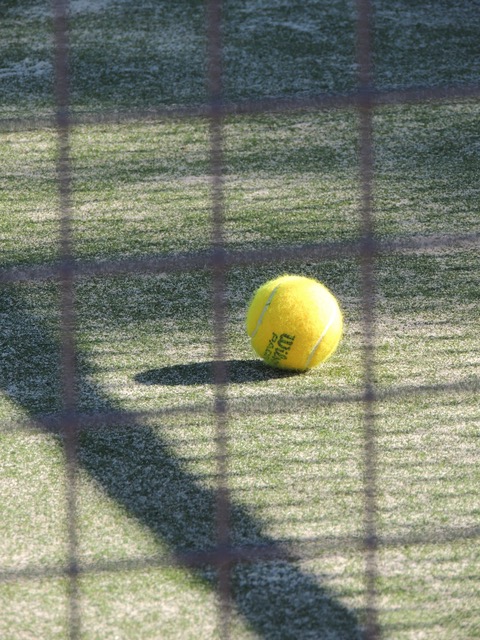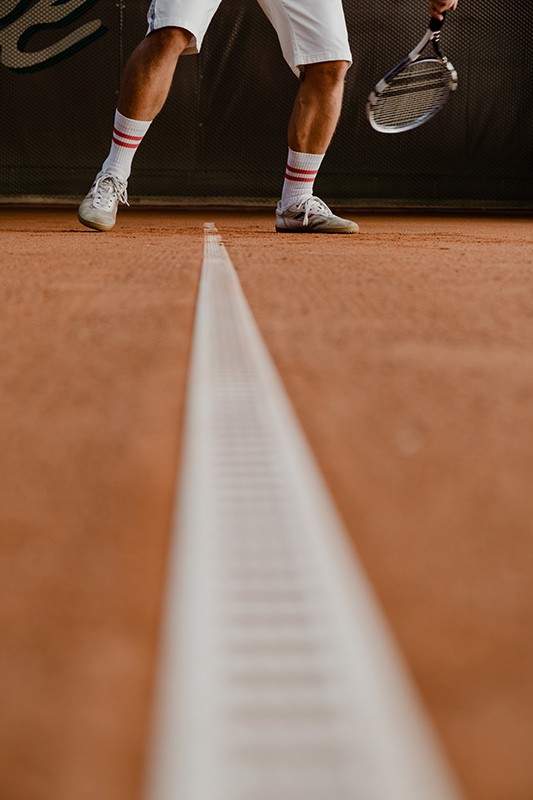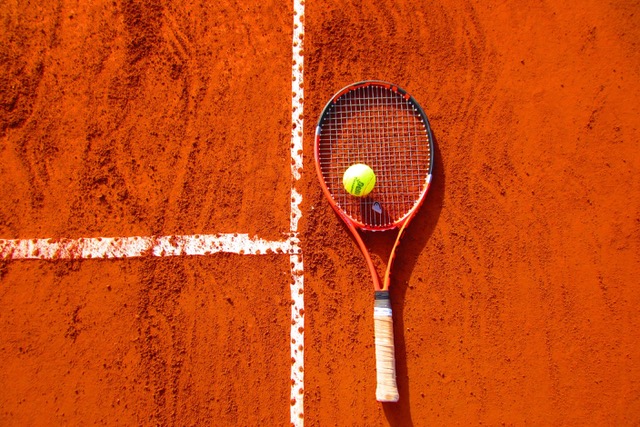 Tennis is one of the most beloved sports in the world, with widespread popularity both at a recreational and a competitive level. A tennis match, unlike other sports, is not limited by a predetermined duration of play, with matches often lasting several hours. Additionally, the game itself involves a series of repetitive stresses, intense serves and strokes, as well as continuous explosive bursts, which make players susceptible to a unique profile of injuries.1,2 Acute injuries in tennis tend to involve the lower extremities,3 whereas chronic overuse injuries tend to involve the shoulder, elbow and wrist.
Tennis is one of the most beloved sports in the world, with widespread popularity both at a recreational and a competitive level. A tennis match, unlike other sports, is not limited by a predetermined duration of play, with matches often lasting several hours. Additionally, the game itself involves a series of repetitive stresses, intense serves and strokes, as well as continuous explosive bursts, which make players susceptible to a unique profile of injuries.1,2 Acute injuries in tennis tend to involve the lower extremities,3 whereas chronic overuse injuries tend to involve the shoulder, elbow and wrist.
Play Surface
Contrary to other sports, tennis can be played in a variety of surfaces. Play surfaces include clay, grass or acrylic. To mention a few examples, Wimbledon uses grass courts, French Open is a clay court tournament, US Open is played on acrylic, whereas Australian Open uses synthetic courts. A clay court is “slow”, and the ball tends to lose speed due to more friction at the ball-surface interface. Hard surface courts are associated with a higher ball velocity, which may put more strain on the upper extremity of the tennis player.
Equipment

Racquets nowadays are lighter, larger and stiffer, weighing up to 250g, as opposed to the wooden and heavy models that existed back in the day.6 Racquet stiffness characteristics, string technology and consequent “sweet spots”, as well as type of hand grip can all contribute to the type of injury incurred. For example, ulnar-sided wrist problems are more common with the western or semi-western grip, whereas the eastern grip tends to affect the flexors
Tennis Biomechanics
Familiarity with the biomechanical factors involved in tennis provides a better understanding of the nature of injuries encountered in tennis players. The most demanding stroke in tennis is the serve, which has been shown to comprise 45-60% of all strokes during a match.8 The serve has been divided into 5 phases: (i) wind up, (ii) early cocking, (iii) late cocking, (iv) acceleration, (v) follow-through.9-11 Other types of stroke include the forehand or backhand, which include 3 phases of movements: (i) racket preparation, (ii) acceleration, and (iii) follow-through. In order to hit a good stroke, linked muscle groups must perform coordinated movements that will lead to a greater force summation. This concept is referred to as the kinetic chain. In tennis, this chain starts from the feet and knees, passes through the core (trunk/back), moves through the shoulder and elbow, and then the wrist and the racquet.12 Mastering this process is what distinguishes a hard hit of a professional from a soft hit of an amateur player. It also explains how a breakdown in this chain can result in overload and injury further down the chain.4 In other words, if you don’t position your knee right, then you might overload your shoulder or elbow.
Relevant Studies

According to a metanalysis by Pluim et al., the incidence of injuries in tennis players of all levels was found to be 0.04-3 injuries per 1000 hours played.2 Epidemiologic studies show that most injuries occur in the lower extremity, followed by the upper limb, and the trunk.13, 14, 2 Furthermore, lower extremity injuries tend to be acute and result from traumatic event, whereas upper extremity injuries tend to be related to repetitive strain and overuse.3 Similar conclusions have been drawn from epidemiological studies regarding professional tournaments. A study of the US Open from 1994 to 2009, showed an overall injury rate of 48.1 injuries per 1000 match exposures. Acute injuries were more prevalent than chronic overuse problems. Most acute injuries involved the lower extremity, with the ankle being the most common location, followed by the wrist, knee, foot and shoulder. Among chronic injuries, the distribution between lower and upper limb was more even.15 Similar results have been yielded from Wimbledon data from 2003 to 2012, with acute injuries representing 73% of total and chronic-onset injuries 27%.
Upper Extremity Problems

Most wrist injuries in tennis relate to ulnar-sided pathology pertinent to the extensor carpi ulnaris (ECU). The generation of ECU tendinopathy is thought to be related to the technique of the low forehand groundstroke and the 2-handed backstroke. The western and semi-western grip types are also implicated.7 ECU tendinopathy is treated with rest, technique modification, splinting and NSAIDS. Acute ECU injuries, with subsheath disruption and subluxation can also occur in tennis players. This injury is connected to sudden supination with wrist flexion and ulnar deviation during the low forehand stroke. It is treated with immobilization and subsheath reconstruction in severe cases.3
Common elbow conditions in tennis include lateral epicondylitis and medial epicondylitis. Lateral epicondylitis is more often seen in less experienced players, possibly due to striking a backhand with a more flexed wrist.17 Medial epicondylitis is instead more common in elite players and involves the pronator teres and flexor carpi radialis.18 In all cases, treatment involves rest, physical therapy, steroid injections, or surgery for recalcitrant cases.
Shoulder problems include internal impingement, SLAP tears and partial-thickness rotator cuff tears. Internal impingement typically occurs during the late cocking phase of the serve. Treatment involves mostly rest and physical therapy, with surgery reserved for resistant cases.
Lower Extremity Problems
Ankle sprains are probably the most common of all tennis injuries. They typically involve the lateral ligament complex. Treatment is usually conservative, but high-grade sprains may warrant surgical treatment. Hip injuries are also mostly muscle strains that can be treated with rest, ice, NSAIDS and physical therapy. If they fail to resolve, however, the possibility of a hip labral tear should be raised, which warrants further investigation with an MRI scan.
Other Issues

Other problems in tennis include abdominal strains and lumbar disk herniation or degeneration. Abdominal muscle strains are very common in tennis, as these muscles are involved in the serving motion. In fact, the overhead serve involves activation of the rectus abdominis, the obliques, iliopsoas and gluteal muscles.19 Rest, ice, NSAIDS and physical therapy are usually effective. Low back pain is also very common in tennis. Pain could be related to ligament sprains, paraspinal muscle strain, or in injury to the lumbar disks. The occurrence of these injuries is related to the increased rotational forces on the back during tennis, as there is an element of rotation with all tennis strokes.4 If lumbar disk herniation is suspected or there are neurological symptoms, an MRI of the lumbar spine is warranted for further investigation.
References
1. Kovacs MS: Applied physiology of tennis performance. Br J Sports Med 2006;40:381-385; discussion 386.
2. Pluim BM, Staal JB, Windler GE, Jayanthi N: Tennis injuries: occurrence, aetiology, and prevention. Br J Sports Med 2006;40:415-423.
3. Chung KC, Lark ME: Upper Extremity Injuries in Tennis Players: Diagnosis, Treatment, and Management. Hand Clin 2017;33:175-186.
4. Dines JS, Bedi A, Williams PN, Dodson CC, Ellenbecker TS, Altchek DW, et al.: Tennis injuries: epidemiology, pathophysiology, and treatment. J Am Acad Orthop Surg 2015;23:181-189.
5. Nigg BM, Yeadon MR: Biomechanical aspects of playing surfaces. J Sports Sci 1987;5:117-145.
6. Miller S: Modern tennis rackets, balls, and surfaces. Br J Sports Med 2006;40:401-405.
7. Tagliafico AS, Ameri P, Michaud J, Derchi LE, Sormani MP, Martinoli C: Wrist injuries in nonprofessional tennis players: relationships with different grips. Am J Sports Med 2009;37:760-767.
8. Johnson CD, McHugh MP, Wood T, Kibler B: Performance demands of professional male tennis players. Br J Sports Med 2006;40:696-699; discussion 699.
9. Elliott B, Fleisig G, Nicholls R, Escamilia R: Technique effects on upper limb loading in the tennis serve. J Sci Med Sport 2003;6:76-87.
10. Fleisig G, Nicholls R, Elliott B, Escamilla R: Kinematics used by world class tennis players to produce high-velocity serves. Sports Biomech 2003;2:51-64.
11. van der Hoeven H, Kibler WB: Shoulder injuries in tennis players. Br J Sports Med 2006;40:435-440; discussion 440.
12. Eygendaal D, Rahussen FT, Diercks RL: Biomechanics of the elbow joint in tennis players and relation to pathology. Br J Sports Med 2007;41:820-823.
13. Lynall RC, Kerr ZY, Djoko A, Pluim BM, Hainline B, Dompier TP: Epidemiology of National Collegiate Athletic Association men's and women's tennis injuries, 2009/2010-2014/2015. Br J Sports Med 2016;50:1211-1216.
14. Okholm Kryger K, Dor F, Guillaume M, Haida A, Noirez P, Montalvan B, et al.: Medical reasons behind player departures from male and female professional tennis competitions. Am J Sports Med 2015;43:34-40.
15. Sell K, Hainline B, Yorio M, Kovacs M: Injury trend analysis from the US Open Tennis Championships between 1994 and 2009. Br J Sports Med 2014;48:546-551.
16. McCurdie I, Smith S, Bell PH, Batt ME: Tennis injury data from The Championships, Wimbledon, from 2003 to 2012. Br J Sports Med 2017;51:607-611.
17. Blackwell JR, Cole KJ: Wrist kinematics differ in expert and novice tennis players performing the backhand stroke: implications for tennis elbow. J Biomech 1994;27:509-516.
18. Vangsness CT, Jr., Jobe FW: Surgical treatment of medial epicondylitis. Results in 35 elbows. J Bone Joint Surg Br 1991;73:409-411.
19. Atkins JM, Taylor JC, Kane SF: Acute and overuse injuries of the abdomen and groin in athletes. Curr Sports Med Rep 2010;9:115-120.

 English
English
 Ελληνικά
Ελληνικά